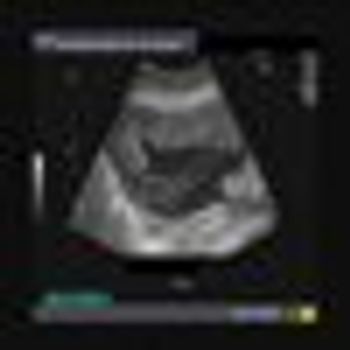
Pulse oximetry screening for arterial oxygen saturation can detect critical congenital heart defects in newborns that antenatal ultrasonography overlooks, British researchers report in a study published online August 5 in The Lancet. MORE

Pulse oximetry screening for arterial oxygen saturation can detect critical congenital heart defects in newborns that antenatal ultrasonography overlooks, British researchers report in a study published online August 5 in The Lancet. MORE

The Edinburgh Postnatal Depression Scale (EPDS) was developed in 1987 for screening postpartum women in outpatient, home visiting settings, or at the 6-8 week postpartum examination. It has been utilized among numerous populations, including US women and Spanish-speaking women in other countries.



Biophysical Profile and Color Doppler Ultrasound in the High Risk Pregnancy Presented by: Dr. Farzad Afzali Kasra Ultrasound Clinic • BPP is applying to detect prenatal asphyxia • Doppler ultrasound is a modality for detecting fetal hypoxia and acidosis • Doppler can also predict later pre- eclampsia at the 24-26 gestational weeks. • Hypoxia: Low oxygen tension • Asphyxia: Low oxygen and high CO2 • Ischemia: Drop in blood flow Comment So, Doppler ultrasound can predict fetal distress sooner than BPP • Prediction of the effect of an asphyxial insult on the fetus requires a measure of:


• The following guidance is evidence based. • Developed by the National Collaborating Centre for Women's and Children's Health • Developed at October 2003, valid till 2007 • The grading scheme used for the recommendations (A, B, C, D, good practice point [GPP], and NICE 2002)

Condition in which the cervix fails to retain the conceptus during pregnancy. Cervix length less than?? Premature ripening of the cervix Definition

Test your ob/gyn knowledge in our DailyDx.




The US Department of Health and Human Services announced on August 1, 2011, that women will receive preventive health services at no additional cost. This historic new guideline is an effort to improve use of preventive services and to reduce health care costs related to preventable diseases and conditions.

Proper functioning of the placenta-the life support system for the fetus-is crucial for a healthy pregnancy and healthy fetus. When placenta disorders arise, so does the likelihood of neurologic abnormalities in the fetus. Specifically, two population-based studies have shown an association between placental infarction and cerebral palsy (CP).

Mammography screening should be offered annually to women beginning at age 40 years, according to a new recommendation by The American College of Obstetricians and Gynecologists (The College).1 This change was brought about by the high incidence of breast cancer in the United States. Early detection of breast cancer has the potential to reduce the number of breast cancer–related deaths. The College previously recommended that women aged 40 years receive mammograms every 1 to 2 years and women aged 50 years have mammograms annually.




The CDC has released a report on the state of breastfeeding support in US hospitals, Maternity Practices in Infant Nutrition and Care, which found that less than 4% of US hospitals provided the full range of support a mother needs to be able to breastfeed, and only about one quarter of the hospitals support mothers and babies at discharge with the services they need, be it a follow-up visit, a phone call from hospital staff, or referrals to lactation consultants, WIC, and other important community support systems.

With the rate of diabetes and prediabetes/glucose intolerance increasing, it is imperative for clinicians to help reduce the risk of their patients developing full-blown diabetes as well as to help patients manage the illness.

Data increasingly point to the benefits of breastfeeding, both for the infant and for the mother. Now, a new study points to the relationship between postpartum depression and negative early breastfeeding experiences, just as the Centers for Disease Control and Prevention sheds light on the lack of breastfeeding support for women in hospitals.

A variety of clinical and nonclinical variables--including induction of labor, use of cervical ripening agents, private health insurance, and local practice guidelines--influence whether women who have had a cesarean delivery go on to delivery vaginally in subsequent pregnancies. Who has successful VBAC? Click here to learn more.

Fewer than 4% of United States hospitals offer the full range of support mothers need to breastfeed successfully, according to a new report from the Centers for Disease Control and Prevention (CDC). For CDC's list of steps that hospitals can take to strengthen breastfeeding support, click here.

OC-related drop in bone density varies with age, hormone dose Oral contraceptives (OCs) may decrease bone density, but the effect, which is small and appears only after about 2 years of use, depends on the age of the user and the hormone dose in the pill, a new study reports. Click here to read more about the long-term health impacts of OC use in young women.

Women who use long-acting reversible contraception (LARC), especially intrauterine devices (IUDs), are significantly less likely have a repeat abortion, New Zealand researchers report. Read the researchers' findings on contraception use in women who have had abortions.



